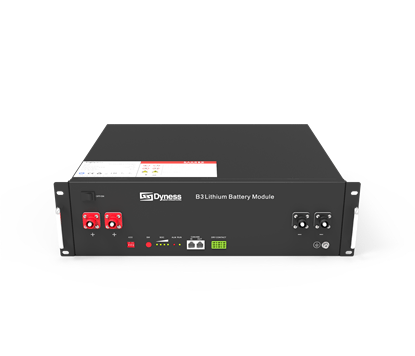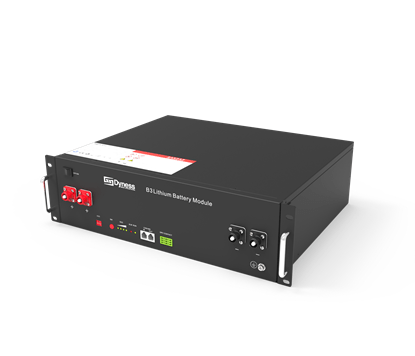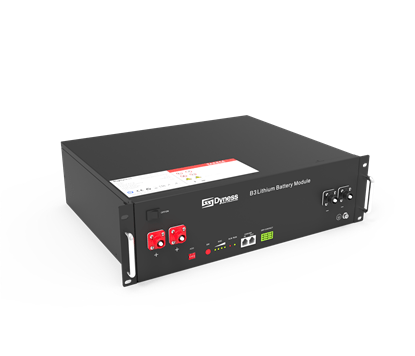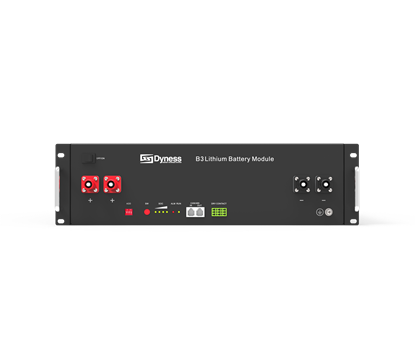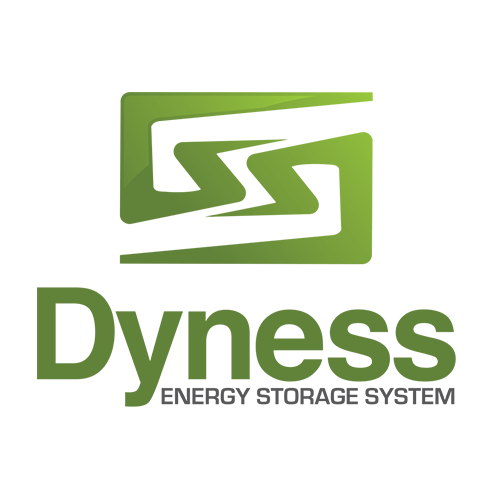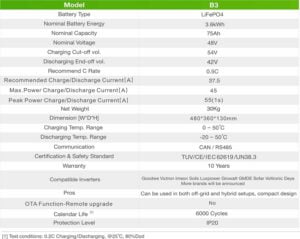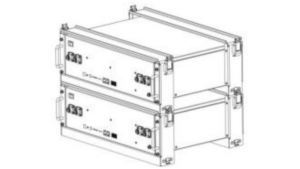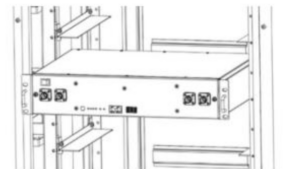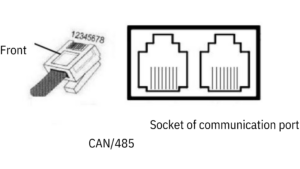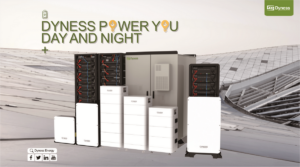Dyness B3 3.6kWh 48V Lithium Ion Battery
Original price was: R22,066.20.R20,271.51Current price is: R20,271.51. incl Vat
8% Off
Dyness B3 3.6kWh 48V Lithium Ion Battery
Dyness B3 with 19” inch design energy storage module, it’s easy installation and maintenance
build in intellingent BMS protection system.
- Modular design flexible expansion
- 19″ inch easy install & maintenance
- High safety LFP cell level monitoring and balancing
- Wide compatibility matching with leading inverter brands
Description
Dyness B3 3.6kWh 48V Lithium Ion Battery
Introduction
- The Dyness B3 3.6kWh Lithium-Ion Battery is widely used in energy storage/back-up power systems aswell as Normal household energy storage systems and Centralised power station energy storage systems.
- The Dyness battery module is equipped with Intelligent BMS system for each battery pack to manage modules effectively. Offers the best energy storage reliability with a longer life span.
Specifications
Dyness B3 3.6kWh 48V Lithium Ion Battery
- Natural Cooling with optional heat/fan configuration
- Longer lifetime – 6000 cycles, 20 years of design life
- Large energy capacity
- Wide temperature range
- Modular design – Compact size and lightweight
Key Points
Eco-friendly
- Dyness B3 3.6kWh 48V Lithium Ion Battery and other Lithium-ion batteries contain relatively low levels of toxic heavy metals found in other types of batteries, such as lead-acid and nickel-cadmium (NiCd) batteries.
- Cadmium, lead, and mercury have been battery stalwarts for years, but prolonged exposure to, and inadequate disposal of these metals is harmful to humans, animals, and plants.
- Although Li-ion batteries are safer than many other types of batteries they still require proper recycling, so never put your used batteries in with your regular rubbish.
Lightweight and compact
- Electrodes commonly used in lithium-ion batteries, lithium and carbon, are lightweight on their own, making for much smaller and lighter batteries than their older counterparts such as lead-acid batteries.
- For comparison’s sake, a typical 51Ah (= ampere-hour) lithium-ion battery weighs about the same as a 24Ah lead-acid battery (about 6-7kg), but provides over twice the capacity.
- This particular characteristic of lithium-ion batteries is especially convenient in head torches, as we can increase the light output and runtime significantly without adding bulk and weight to the battery pack (and on your head!).
High energy density = A bigger punch
- Lithium is a highly reactive element with the ability to release and store large amounts of energy, allowing li-ion batteries to pack a high energy capacity in a small size.
- This translates to lithium-ion batteries lasting much longer between charges than other rechargeable batteries, while still maintaining their high level of performance.
- A typical lithium-ion cell (= battery) has an average cell voltage of 3.6V, whereas a nickel-metal hydride (NiMH) cell averages at 1.2V, meaning three Ni-MH batteries are required to match the output of a single lithium-ion battery.
Low maintenance
- Older types of rechargeable batteries, such as nickel-cadmium or nickel-metal hydride batteries had a so-called “memory effect”, or “lazy battery effect”:
- If they were repeatedly partially discharged before being recharged, ultimately the battery would only deliver the amount of energy that was used during the partial discharges before its voltage would drop.
- To avoid this, NiCd and NiMH batteries would need to be regularly maintained by completely discharging and recharging them.
- Dyness B3 3.6kWh 48V Lithium Ion Battery and other Lithium-ion batteries don’t suffer from the memory effect, which means they always give up their last bit of power, and you can recharge them whether you’ve used 100% or 25% of their capacity with no pesky maintenance needed!
More charge cycles
- Quality lithium-ion batteries last about a 1000 full charge cycles. A full charge cycle is when the battery is discharged to flat and then recharged to full, so using your battery until it’s at 75% capacity and then plugging it into recharge doesn’t constitute a full charge cycle.
- When your battery has recharged back to full, you can still use the 75% of the capacity that you were left with before you recharged your battery; only then has your battery gone through a full charge cycle.
Low self-discharge rate
- Dyness B3 3.6kWh 48V Lithium Ion Battery and other Lithium-ion batteries also have a relatively low self-discharge rate. Self-discharge is a natural, irreversible phenomenon for batteries, where chemical reactions inside the batteries reduce their capacity even when the battery is not being used.
- The self-discharge rate of lithium-ion batteries peaks at about 5% within the first 24 hours after charging the battery, and then tapers off to 1-2% per month. In comparison, nickel-based rechargeable batteries lose about 10-15% of their capacity after charge and another 10-15% per month.
Wide Compatibility
- Victron.
- Goodwe.
- Imeon.
- Solis.
- LuxPower.
- Sofar.
- GMDE.
- Growatt.
- Voltronic.
Dyness B3 3.6kWh 48V Lithium Ion Battery Interface Definitions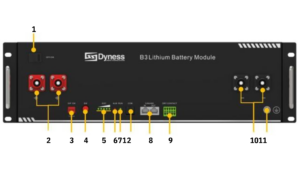
- Power Switch
- Positive Socket
- ADD
- SW(battery wake/sleep switch)
- SOC
- ALM
- RUN
- CAN/485
- Dry Contact
- Negative Socket
- Grounding
- COM
Mounting Methods
Dyness B3 3.6kWh 48V Lithium Ion Battery
Battery Management System (BMS)
Dyness B3 3.6kWh 48V Lithium Ion Battery
Voltage Protection
Dyness B3 3.6kWh 48V Lithium Ion Battery
Low Voltage Protection in Discharging
- When any battery cell voltage or total voltage is lower than the rated protection value during discharging, the over-discharging protection is activated, and the battery buzzer makes an alarm sound.
- Then battery system stops supplying power to the outside. When the voltage of each cell back to rated return range, the protection is over.
Over Voltage Protection in Charging
- Battery will stops charging when total voltage or any battery cell voltage reaches the rated protection value during charging stage. When total voltage or all cell back to rated range, the protection is over.
Current Protection
Dyness B3 3.6kWh 48V Lithium Ion Battery
Over Current Protection in Charging
- When the charge current >90A, current limit protection mode is activated, current will be limited to 1A,protection is removed after rated time delaying 10S. Circulate like this until the current is lower than 90A.
Over Current Protection in Discharging
- When the discharge current is higher than 100A, the battery buzzer alarms and the system stops discharging after 15s. After protection, the discharging will restore in 60s delay or immediately when there is charging current.
Low/Over temperature protection in charging
- When battery’s temperature is beyond range of -5 ℃ ~ 55 ℃ during charging, temperature protection is activated, device stops charging.The protection is over when temperature back to rated working range.
Low/Over temperature protection in discharging
- When battery’s temperature is beyond range of -20℃~ 55℃ during discharging, temperature protection is activated, device stops supplying power to the outside.
- The protection is over when temperature back to rated working range.
Other Protection
Dyness B3 3.6kWh 48V Lithium Ion Battery
Short Circuit Protection:
- When the battery is activated from the shutdown state, if a short circuit occurs, the system starts short-circuit protection for 60 seconds.
Self-Shutdown
Dyness B3 3.6kWh 48V Lithium Ion Battery
- When device connects no external loads and power supply and no external communication for over 72 hours, device will dormant standby automatically.
MORE ABOUT DYNESS
Dyness owns the most sophisticated team with top class R&D experts from the industry. We devote ourselves to responsible engineering of the safest, greenest possible future for you and your family.
Our Powerbox stores excess power produced from solar in daytime, it can be used at night to increase greater energy self sufficiency and security, or used at peak time to reduce household electric charges. Dyness brings our latest Battery Energy Storage System (BESS) Powerbox to Australia at affordable price and top class quality.
Dyness’s mission is to facilitate a healthier energy chain at reasonable cost,consumers and utilities could all get out of the conventional fuels that hurt our planet,where in stead,the clean energy takes charge.
Let’s start using the sunshine by schedule!
Additional information
| Weight | 32 kg |
|---|---|
| Dimensions | 57 × 47 × 23 cm |
| Brand name | |
| Battery Type | |
| Nominal Battery Voltage | |
| Nominal Battery Energy | |
| Ingress Protection Degree | |
| Parallel Capacity | |
| Nominal Capacity |



